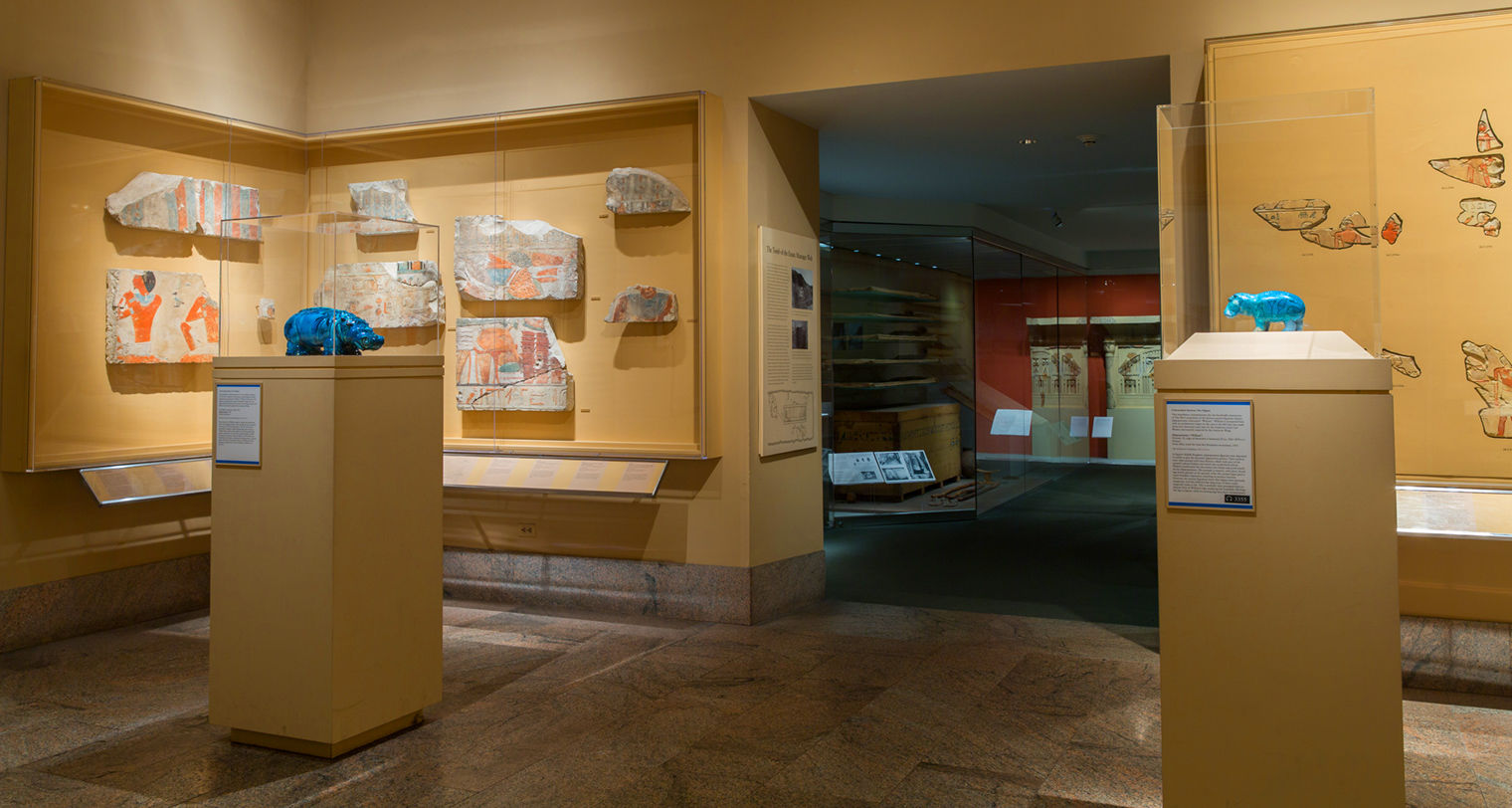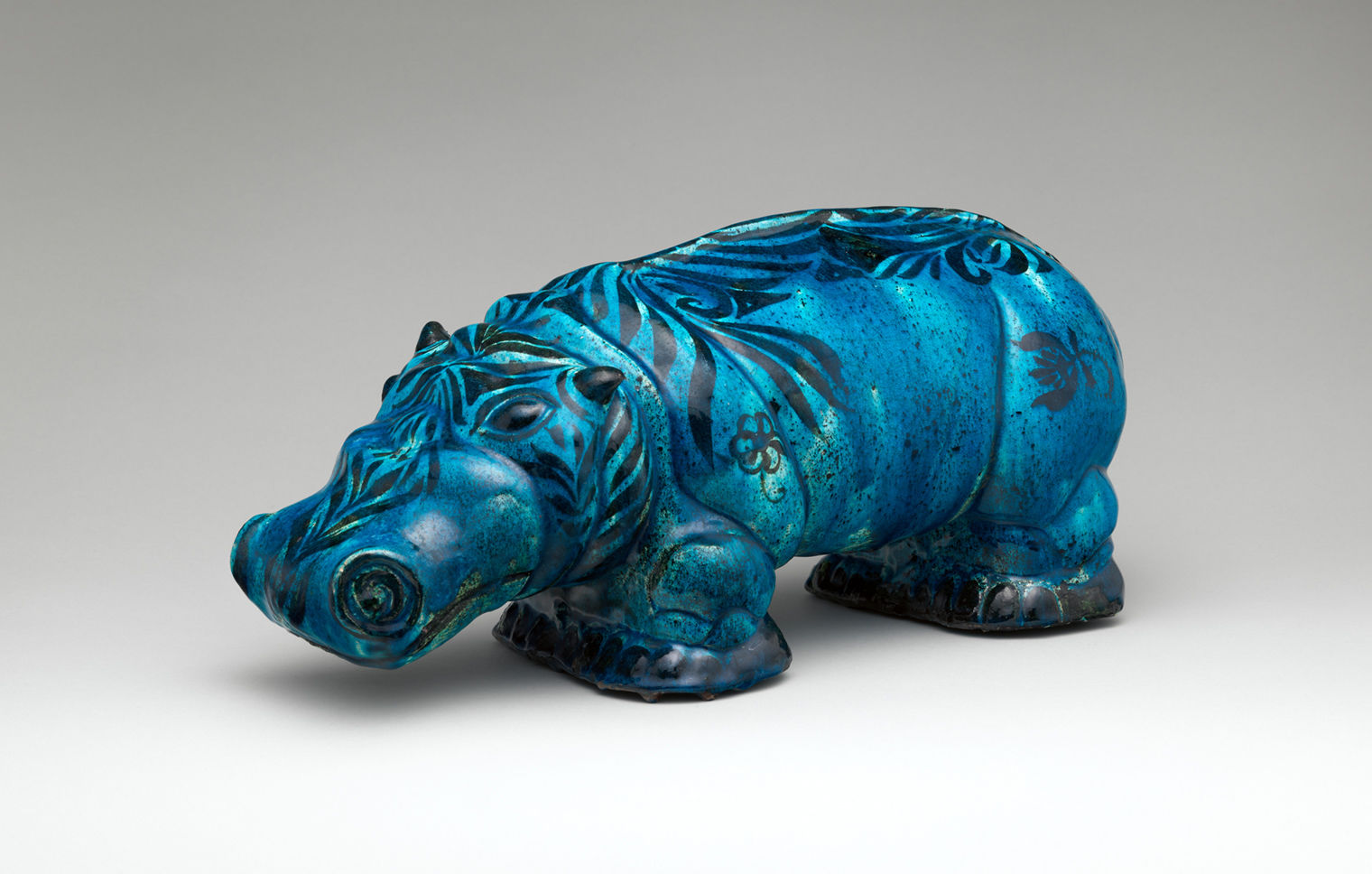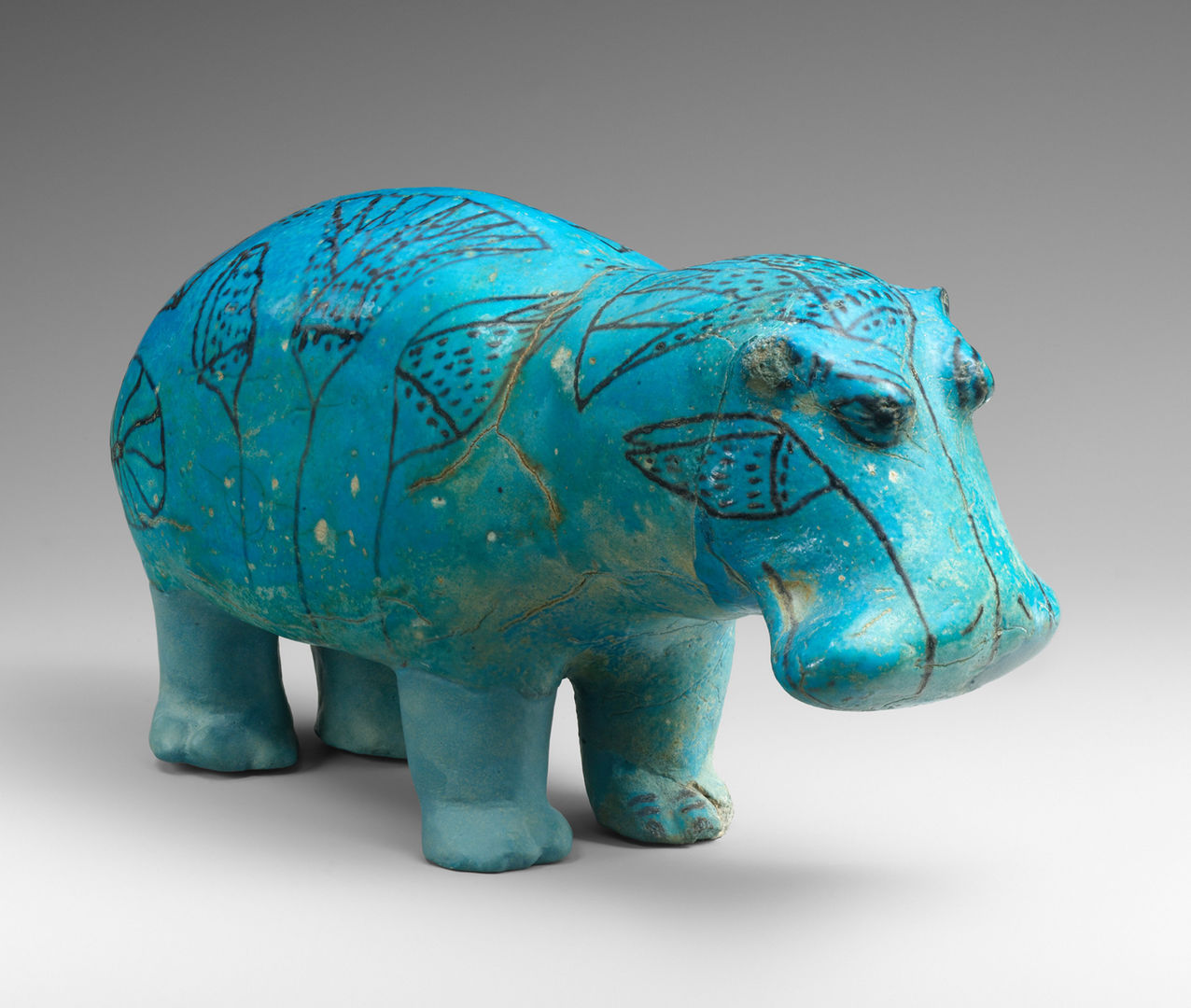Conversation between Two Hippos

Conversation between Two Hippos in gallery 107
A 2017–18 display at The Met commemorated the one hundredth anniversary of the Museum's acquisition of the famous ancient Egyptian hippopotamus known as "William." Here William was juxtaposed with an earthenware hippo, made about four thousand years later by the American artist Carl Walters, which was recently acquired by the American Wing.

Carl Walters (American, 1883–1955). Hippopotamus, 1936. Glazed earthenware, 7 3/4 x 18 1/8 in. (19.7 × 46 cm). The Metropolitan Museum of Art, New York, Purchase, Friends of the American Wing Gift, 2017 (2017.134)
Ceramicist Carl Walters was inspired to emulate the brilliant blue color of the Egyptian faience beads and figurines he encountered on his visits to The Met beginning in 1919. By 1921, the artist had succeeded in creating a bright turquoise glaze, later known as "Walters blue," that he often applied over boldly painted black patterns and motifs. Walters was one of America's first artists to combine colorful graphic decoration and ceramic sculpture. He was best known for his playful animal figures like the hippopotamus above, a favorite subject of his that was possibly inspired by William and other Egyptian examples.

Hippopotamus ("William"), Dynasty 12, reign of Senwosret I–Senwosret II (ca. 1961–1878 B.C.). Faience, L. 7 7/8 x W. 3 x H 4 1/2 in. (20 x 7.5 x 11.2 cm). From Egypt, Meir, tomb B3; Said Bey Khashaba excavations, 1910. The Metropolitan Museum of Art, New York, Gift of Edward S. Harkness, 1917 (17.9.1)
In Egypt, hippopotamus figurines such as William (above) were deposited in tombs to give the deceased regenerative powers. Their surfaces were often painted with lotus flowers, which were part of the animal's natural habitat and also symbolized rebirth. For his modern hippo, Walters transformed this decoration into foliate and scroll motifs. Walter's hippo is massive with short, broad legs firmly planted on the ground, while the smaller ancient hippo gives a much friendlier impression, matching its positive function. However, the ancient Egyptians knew that hippos were extremely dangerous, and they believed that depictions of them could magically come alive. To learn more about William's dark side, see the video Precaution!
Both hippos were in conversation in Egyptian Art gallery 107 from September 2017 to April 2018. William is now back in his usual place in gallery 111.
Please come visit!